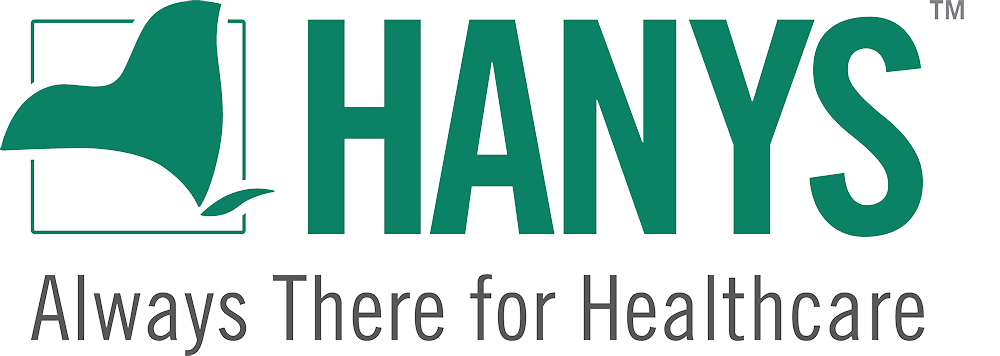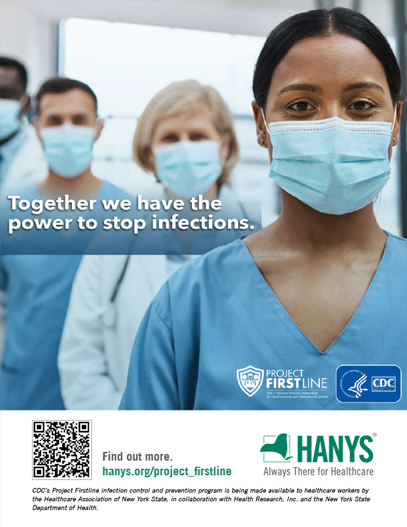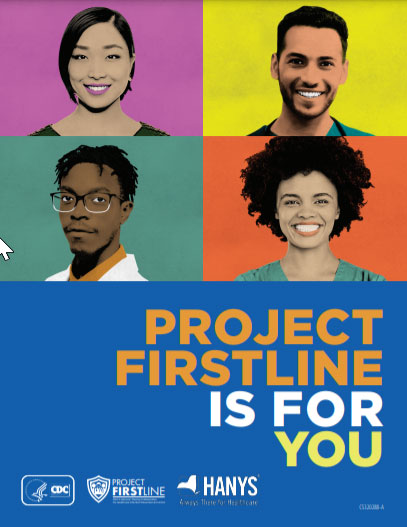Training
CDC’s Project Firstline is infection control and prevention training specifically tailored for the healthcare workforce. This training is designed for non-licensed staff in the inpatient and outpatient setting, including hospitals, clinics, physician practices and nursing homes.
A valuable addition to your facility's infection control and prevention program, Project Firstline can be offered to nurse aides, environmental services, security, administrative, volunteer, EMS and any staff, paid or unpaid, who works in the healthcare environment.
Past Webinars
Healthcare reservoirs
This webinar will focus on where infectious germs live in the healthcare environment. We’ll discuss four common healthcare reservoirs: water and wet surfaces, dry surfaces, dirt and dust, and devices. Participants will learn to describe which infection risks are present in each of the four reservoirs and how they can reduce the risk of transmitting infection to themselves, coworkers and patients.
Body reservoirs
View session recording | Slides | Handout
This session will discuss sources of infectious bacteria, viruses and fungi contamination in the human body and infection control interventions staff should deploy to protect themselves, patients and the community from bodily contaminants.
By the end of the session, participants will be able to:
- describe the body's four reservoirs for infection risk; and
- discuss infection control interventions staff can use to reduce infection risks.
Gowns and gloves
View session recording | Handout
Learn the importance of personal protective equipment to infection control and prevention in the healthcare setting.
Upon completion of the webinar, participants will be able to describe:
- two reasons why wearing gloves is important for infection control;
- two ways that gowns are important for infection control; and
- three reasons why wearing more than one pair of gloves at once, or wearing more than one gown at once, is not recommended for routine care.
Virus variants
View session recording | Slides | Handout
Learn about new virus strains, variants and effective infection control interventions to contain them.
Upon completion of the webinar, participants will be able to:
- describe one way that new virus strains develop; and
- discuss why the infection control actions recommended for COVID-19 work for new strains of SARS-CoV-2, and their significance.
Recognize and limit infection control risks
View session recording | Slides | Handout
Everyone, no matter their training or role, can learn to recognize an infection control risk. Understanding where germs live and how they move between places and people helps you recognize and act on risks before transmission occurs. When risks are identified, staff can take the appropriate infection control actions to prevent germs from spreading to protect patients, community members and themselves. This webinar will review ways to recognize risks in healthcare settings and learn when to apply infection control actions to limit that risk.
Upon completion of the webinar, participants will be able to:
- identify tasks in healthcare that can cause germs to move between and among reservoirs; and
- recognize when to apply infection control actions to limit the spread of germs.
How germs make people sick
View session recording | Slides | Handout
At least five elements are needed for a germ to spread and cause infection:
- a reservoir for the germ to live in;
- a pathway for the germ to move out of the reservoir;
- a person to infect;
- the ability to get around the body’s defenses; and
- the germ's ability to survive.
This session will review infection control actions healthcare staff can take to halt germ spread and teach strategies to help the practice become second nature.
What does it mean to recognize risk?
View session recording | Slides | Handout
Risk recognition means seeing the potential for problems to occur. Healthcare risks are different than household or community risks. This session will help participants recognize and take steps to mitigate risks in the healthcare setting, specifically germ spread, including bacterial, fungal and viral infection.
Upon completion of the webinar, participants will be able to:
- understand the concept of risk recognition in the healthcare setting; and
- apply the concept of risk recognition to infection control.
Hand Hygiene
View session recording | Slides
Hand hygiene in the healthcare environment is a key preventative measure that everyone can take. Attendees of this session will review germ transmission, proper hand hygiene event timing and procedures for maintaining clean staff hands and decreasing germ transmission to surfaces, co-workers and patients.
Upon completion of the webinar, participants will be able to:
- describe two reasons why having clean hands is important in healthcare; and
- discuss two reasons why hands are the main way germs spread.
Source control in healthcare to prevent infections
View session recording | Slides
April 7 | 9 - 9:30 a.m.
This session will review the purpose of and how to deploy source control to prevent infections.
Upon completion of the webinar, participants will be able to explain:
- how source control keeps germs from spreading; and
- why source control for COVID-19 focuses on masking.
Environmental cleaning and disinfection
March 3 | 9 - 9:30 a.m.
This session will discuss the importance of cleaning and disinfection in preventing illness and its spread. Attendees will take a deep dive on environmental cleaning and disinfection and learn methods for completing both.
Upon completion of the webinar, participants will be able to:
- describe the difference between cleaning and disinfection; and
- discuss why it is important to follow the instructions for disinfectant products.
Office hours
Feb. 17 | 9 - 9:30 a.m.
Office hours will be an open forum to discuss topics such as:
- feedback on training;
- recommendations for future offerings;
- group training strategies;
- strategies to increase viewing of the recorded events; and
- questions and answers from attendees.
How COVID-19 spreads: A review
Feb. 3 | 9 - 9:30 a.m.
Review the characteristics of respiratory droplets, and how droplets spread COVID-19 and other illnesses.
Upon completion of the webinar, participants will be able to:
- describe one characteristic of respiratory droplets;
- discuss the primary way that SARS-CoV-2 moves between people; and
- explain one reason why infection control actions focus on keeping respiratory droplets out of the air and away from other people.
Office hours
Jan. 20 | 9 - 9:30 a.m.
Office hours will be an open forum to discuss topics such as:
- feedback on training;
- recommendations for future offerings;
- group training strategies;
- strategies to increase viewing of the recorded events; and
- questions and answers from attendees.
How viruses spread from surfaces to people
Jan. 6 | 9 - 9:30 a.m.
Learn about the importance of surfaces’ disinfection and cleaning and how infections are spread from surfaces to staff, patients and visitors.
Upon completion of the webinar, participants will be able to:
- describe two ways viruses can spread from surfaces to people; and
- explain one reason why good hand hygiene and environmental cleaning are important to keep germs from spreading in healthcare.
Office hours
Dec. 16 | 9 - 9:30 a.m.
Office hours will be an open forum to discuss topics such as:
- feedback on training;
- recommendations for future offerings;
- group training strategies;
- strategies to increase viewing of the recorded events; and
- questions and answers from attendees.
How respiratory droplets spread COVID-19
Dec. 2 | 9 - 9:30 a.m.
Learn about the characteristics of respiratory droplets and how droplets spread COVID-19 and other illnesses.
Upon completion of the webinar, participants will be able to:
- describe one characteristic of respiratory droplets;
- discuss the primary way that SARS-CoV-2 moves between people; and
- explain one reason why infection control actions focus on keeping respiratory droplets out of the air and away from other people.
Strategies for group training
Nov. 17 | 9 - 9:30 a.m.
Office hours will be an open forum to discuss topics such as:
- feedback on training;
- recommendations for future offerings;
- group training strategies;
- strategies to increase viewing of the recorded events; and
- questions and answers from attendees.
The basic science of viruses
Nov. 3 | 9 - 9:30 a.m.
Learn about the science of viruses and how infection control and prevention can reduce the spread of viruses and protect staff from contracting them.
Upon completion of the webinar, participants will be able to:
- distinguish one core difference between SARS-CoV-2 and COVID-19;
- identify, and explain to others, the three main parts of a virus;
- describe three steps showing how viruses use the cells of living things to make more copies of themselves; and
- explain one reason why infection control actions focus on keeping respiratory droplets out of the air and away from other people.
Ways to increase staff engagement in the training
Oct. 28 | 9 - 9:30 a.m.
Office hours will be an open forum to discuss topics such as:
- feedback on training;
- recommendations for future offerings;
- group training strategies;
- strategies to increase viewing of the recorded events; and
- questions and answers from attendees.
The concept of infection control training
Oct. 7 | 9 - 9:30 a.m.
Our kick-off session will introduce Project Firstline and describe the importance of infection control and prevention. Participants will discuss why healthcare staff are asked to follow infection control and prevention strategies to keep themselves, patients, coworkers and the community safe by deploying methods aimed at reducing and preventing the spread of infections and viruses.
Upon completion of the webinar, participants will be able to:
- articulate at least one primary goal of infection control; and
- describe the target staff for Project Firstline infection control and prevention training.



